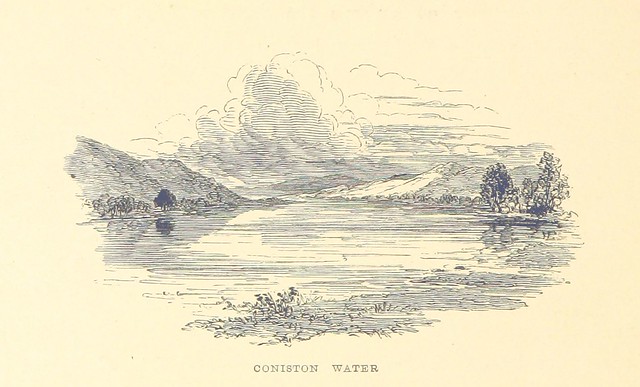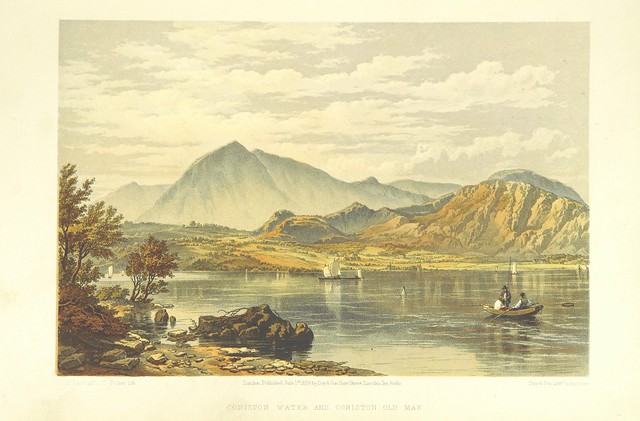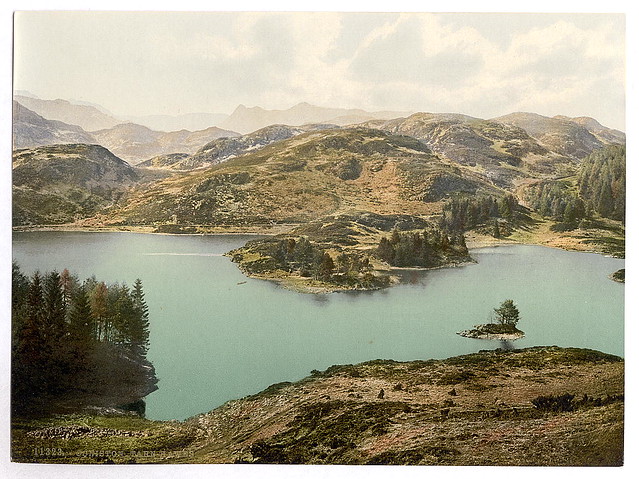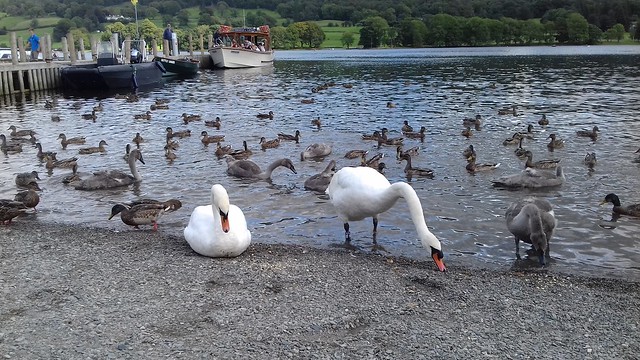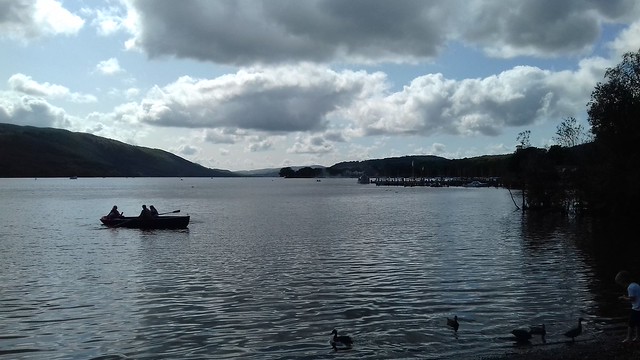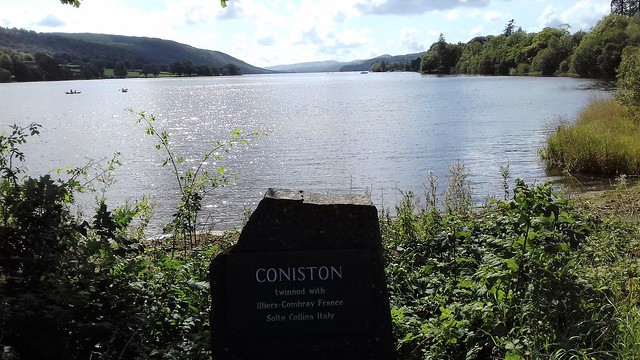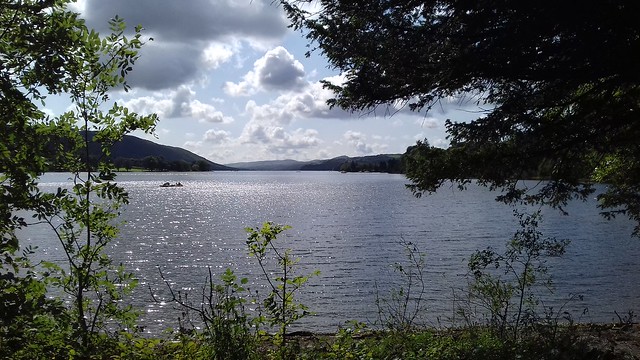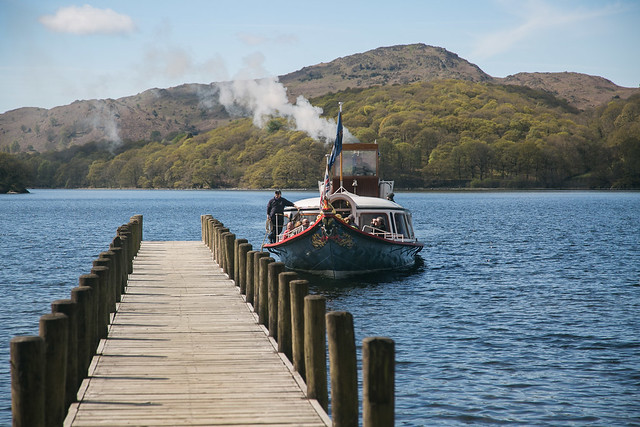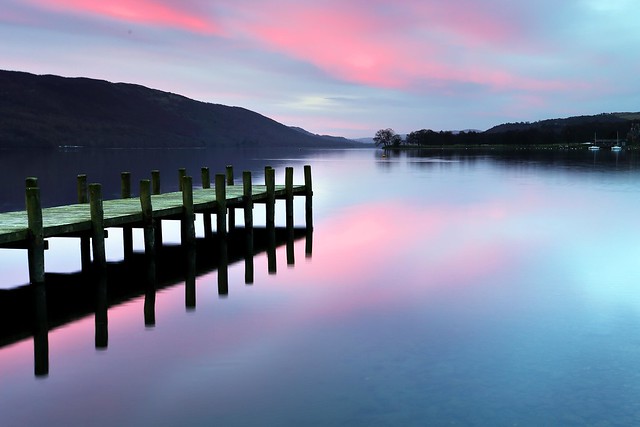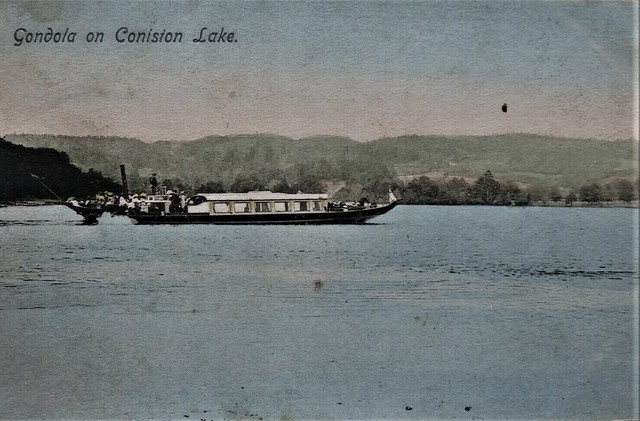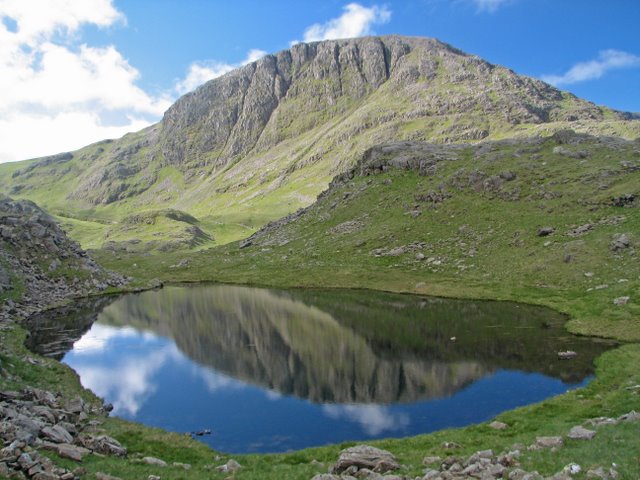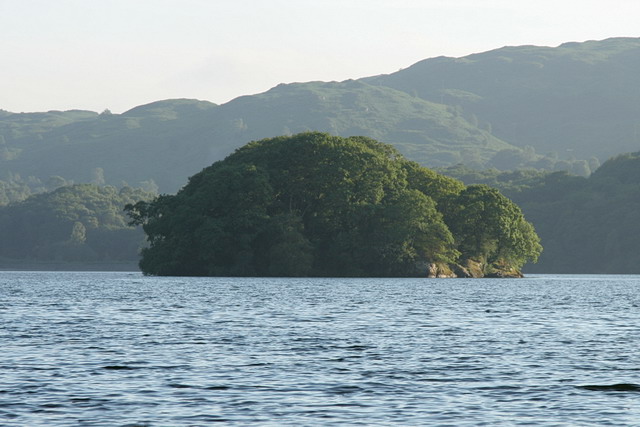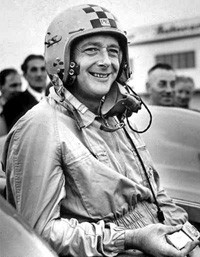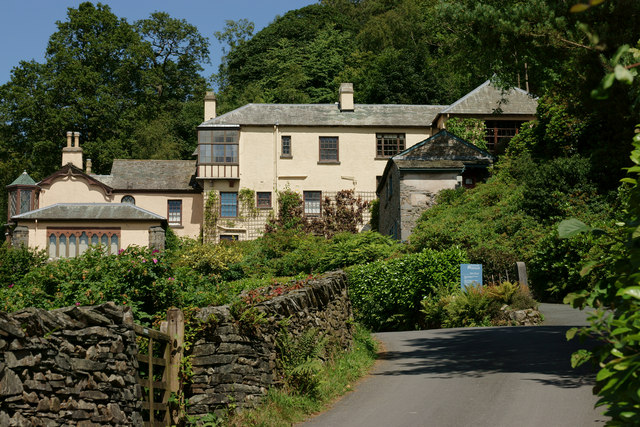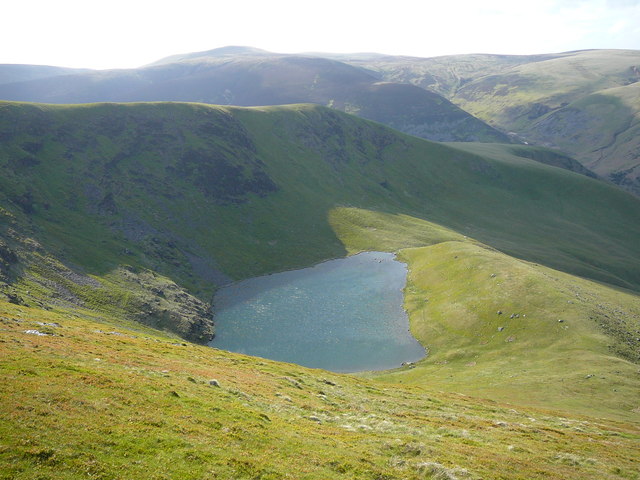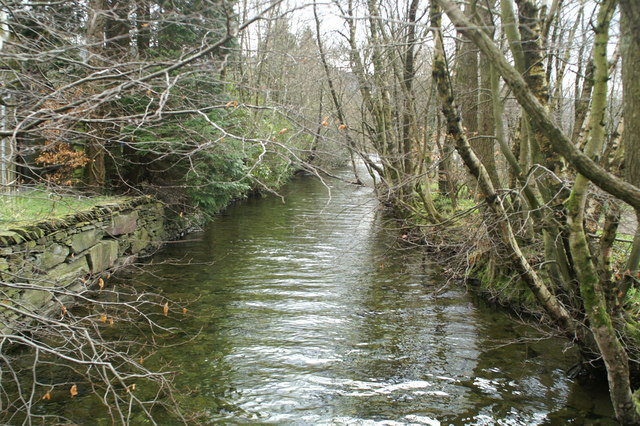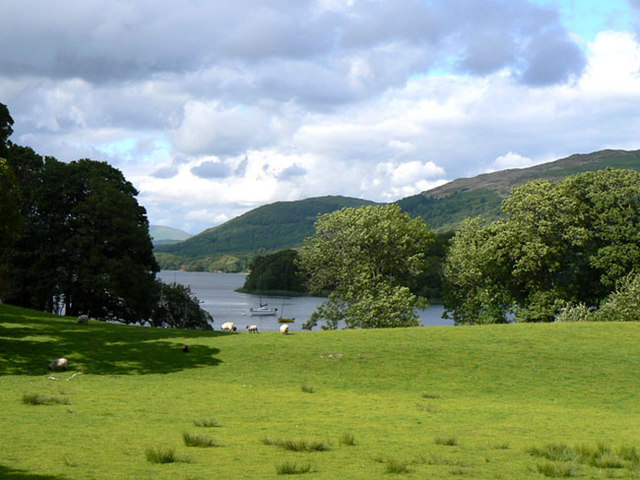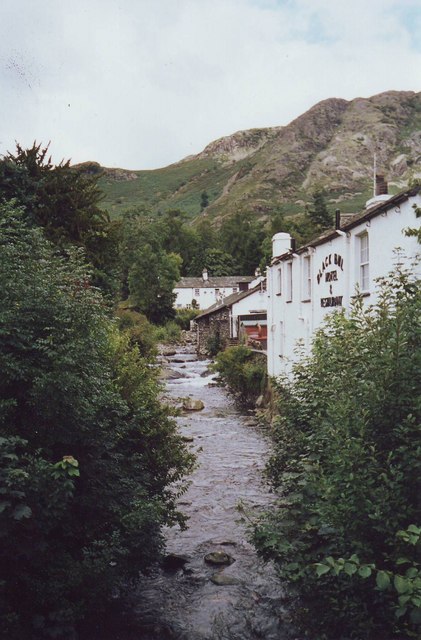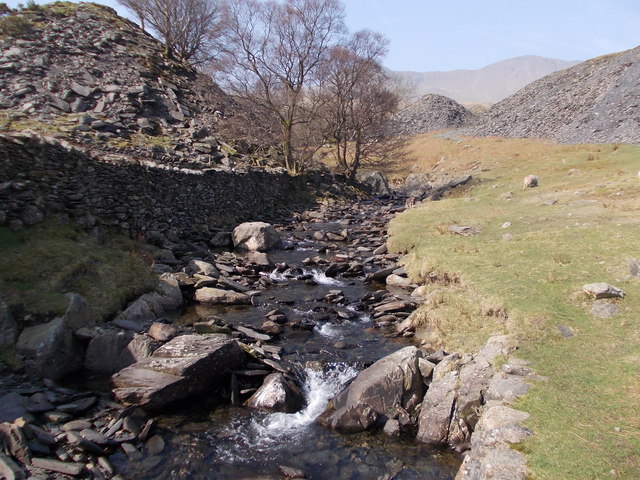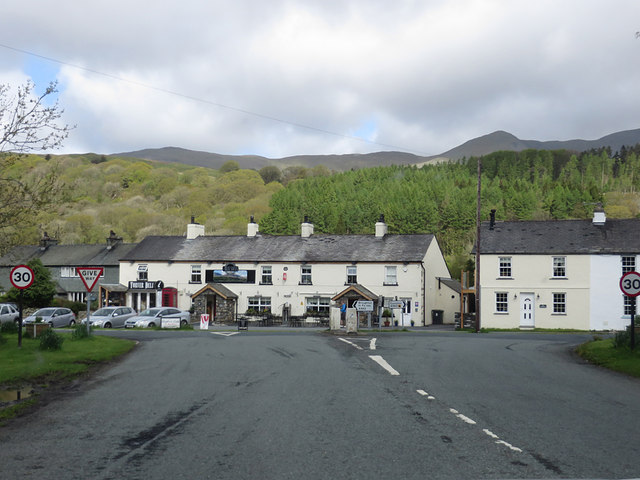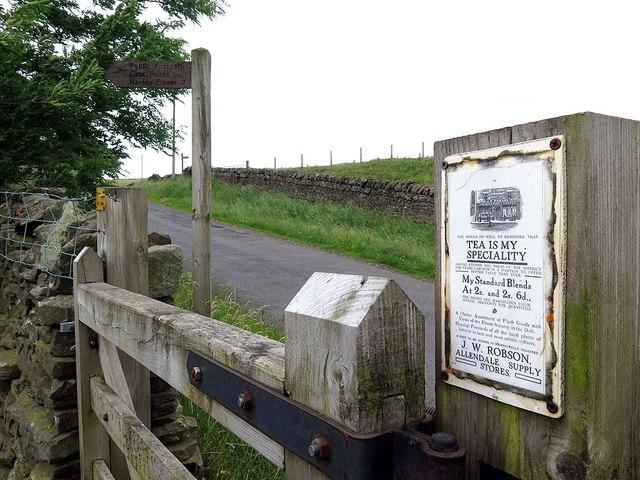Topics > Cumbria > Lake District > Coniston Water
Coniston Water
Coniston Water in Cumbria is the third largest lake in the English Lake District. It is five miles long by half a mile wide (8 km by 800 m), has a maximum depth of 184 feet (56 m), and covers an area of 1.89 square miles (4.9 km2). The lake has an elevation of 143 feet (44 m) above sea level. It drains to the sea via the River Crake.
Geography and administration
Coniston Water is situated within Furness, part of the North Lonsdale exclave of the historic county of Lancashire. Since 1974, it is within the administrative county of Cumbria.
Coniston Water is an example of a ribbon lake formed by glaciation. The lake sits in a deep U-shaped glaciated valley scoured by a glacier in the surrounding volcanic and limestone rocks during the last ice age.
To the north-west of the lake rises the Old Man of Coniston, the highest fell in the Coniston Fells group.
Etymology
" 'The king's estate or village'. The 2nd el.[ement] is OE tūn, and the whole name may, like numerous English Kingstons, be from OE 'cyninges-tūn'. ... Scand[inavian] influence is, meanwhile, shown by the '-o-' of early and modern spellings, and Ekwall speculated that this could have been the centre of a 'small Scandinavian mountain kingdom' ".
Plus "OE 'wæter', with the meaning probably influenced by its ON relative 'vatn'."
(OE=Old English; ON=Old Norse).
History
Remains of agricultural settlements from the Bronze Age have been found near the shores of Coniston Water. The Romans mined copper from the fells above the lake. A potash kiln and two iron bloomeries show that industrial activity continued in medieval times. In the 13th and 14th centuries, Coniston Water was an important source of fish for the monks of Furness Abbey who owned the lake and much of the surrounding land. Copper mining continued in the area until the 19th century.
The lake was formerly known as "Thurston Water", a name derived from the Old Norse personal name 'Thursteinn' + Old English 'waeter'. This name was used as an alternative to Coniston Water until the late 18th century.
The Victorian artist and philosopher John Ruskin owned Brantwood House on the eastern shore of the lake, and lived in it from 1872 until his death in 1900. Ruskin is buried in the churchyard in the village of Coniston, at the northern end of the lake. His secretary the antiquarian W. G. Collingwood wrote a historical novel Thorstein of the Mere about the Northmen who settled on the island in the lake.
The Victorian and Edwardian artist Henry Robinson Hall settled in Coniston during the Great War and is buried in the parish church graveyard.
Arthur Ransome set his children's novel Swallows and Amazons and the sequels Swallowdale, Winter Holiday, Pigeon Post and The Picts and the Martyrs around a fictional lake derived from a combination of Coniston Water and Windermere. The fictional lake resembles Windermere, but the surrounding hills and fells resemble those of Coniston Water. Some of Coniston Water's islands and other local landmarks can be identified in the novels. In particular the books' Wild Cat Island with its secret harbour is based on Peel Island. The Amazon River is based on the River Crake. The Swallows and Amazons series involve school holiday adventures in the 1930s.
Historically, Coniston was part of Lancashire (North of the Sands), until Local Government reorganisation in 1974 when Cumbria was created.
Waterspeed record
In the 20th century Coniston Water was the scene of many attempts to break the world water speed record. On 19 August 1939 Sir Malcolm Campbell set the record at 141.74 miles per hour () in Blue Bird K4. Between 1956 and 1959 Sir Malcolm's son Donald Campbell set four successive records on the lake in Bluebird K7, a hydroplane.
In 1966 Donald Campbell decided that he needed to exceed 300 miles per hour (483 km/h) in order to retain the record. On 4 January 1967, he achieved a top speed of over 320 miles per hour () in Bluebird K7 on the return leg of a record-breaking attempt. He then lost control of Bluebird, which somersaulted and crashed, sinking rapidly. Campbell was killed instantly on impact when decapitated by the K7's windscreen. The attempt could not be counted as a record-breaking run because the second leg was not completed. The remains of Bluebird were recovered from the water in 2001 and the majority of Campbell's body was recovered later in the same year.
Lady in the Lake
In recent times, Coniston Water has become known for a controversial murder case. Mrs Carol Park was dubbed the "Lady in the Lake" after the Raymond Chandler novel of the same name.
Boating
The lake is ideal for kayaking and canoeing and there are a number of good sites for launching and recovery. It is paddled as the second leg of the Three Lakes Challenge.
The steam yacht Gondola tours the lake in the summer months, along with two smaller motorised launches.
Boats can be hired from the lakeside near the steam yacht, with various sizes of boat for hire, from small canoes and kayaks to large personal craft. Along with Ullswater and Derwentwater, Coniston Water has a mandatory waterspeed limit of . This is suspended temporarily for boats attempting new world waterspeed records during Records Week, usually the first week in November.
In Literature
Letitia Elizabeth Landon's poem "Coniston Water" illustrates a plate entitled Coniston Water from Nebthwaite, Lancashire.
Visit the page: Coniston Water for references and further details. You can contribute to this article on Wikipedia.

from https://commons.wikimedia.org…
Sir Malcolm Campbell c.1935
- Photo by Richard H. LeSesne c.1935. Public Domain image c/o Wikimedia Commons
Added by
Simon Cotterill
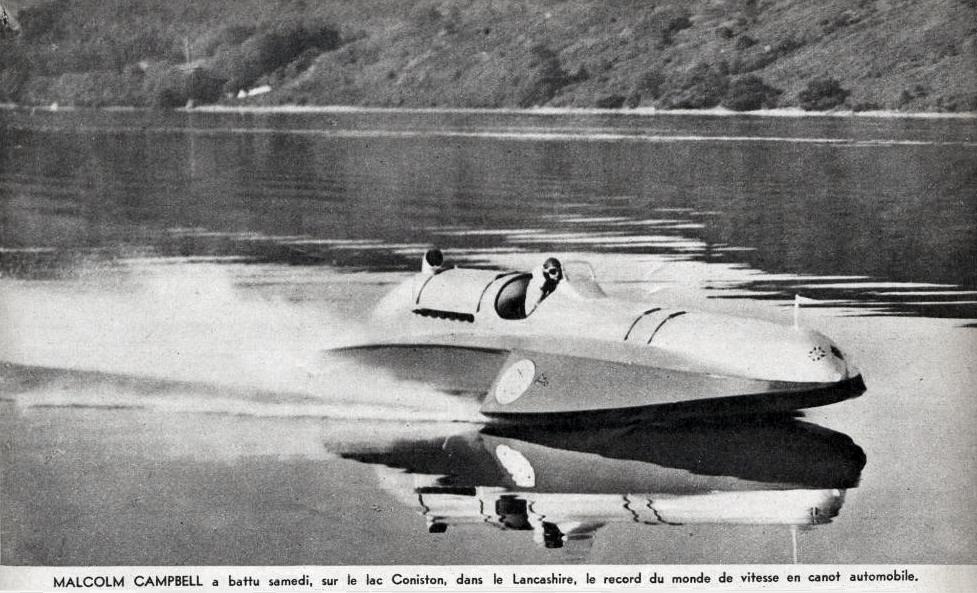
from https://commons.wikimedia.org…
Malcolm Campbell, 1939 August 19 with a Bluebird K4 1.750 CV, Water world speed record at Coniston Water
- Photo, Coniston Water, 19 August 1939. Public Domain image c/o Wikimedia Commons.
Added by
Simon Cotterill
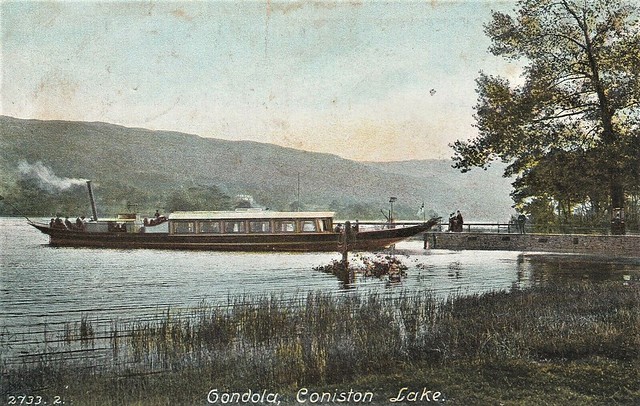
from Flickr (flickr)
Coniston Gondola old postcard 1904 to Robinson Wawne Rd Sutton on Hull +recent p
Pinned by Peter Smith
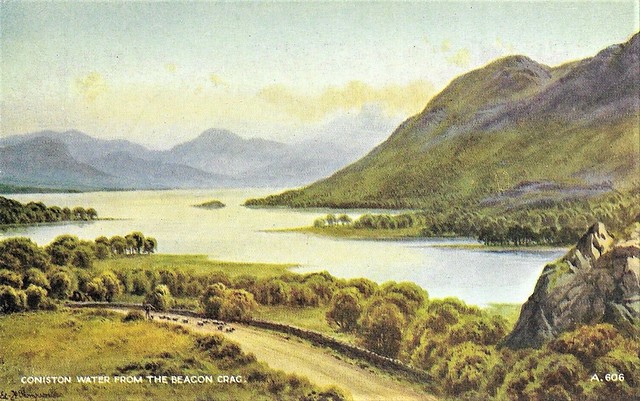
from Flickr (flickr)
Conniston Water from Beacon Crag E M Thompson Artist Postcard 104S
Pinned by Peter Smith

from Flickr (flickr)
Cumbria Postcard - Coniston Water and The Old Man RS16495
Pinned by Peter Smith
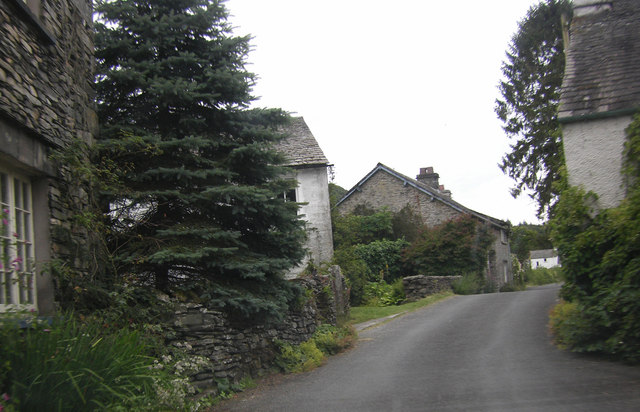
Co-Curate Page
Nibthwaite
- Overview Map Street View High Nibthwaite. Nibthwaite Grange is located to the south (SD 29593 88135).


from https://commons.wikimedia.org…
Sir Malcolm Campbell c.1935
- Photo by Richard H. LeSesne c.1935. Public Domain image c/o Wikimedia Commons
Added by
Simon Cotterill

from https://commons.wikimedia.org…
Malcolm Campbell, 1939 August 19 with a Bluebird K4 1.750 CV, Water world speed record at Coniston Water
- Photo, Coniston Water, 19 August 1939. Public Domain image c/o Wikimedia Commons.
Added by
Simon Cotterill

from Flickr (flickr)
Coniston Gondola old postcard 1904 to Robinson Wawne Rd Sutton on Hull +recent p
Pinned by Peter Smith

from Flickr (flickr)
Conniston Water from Beacon Crag E M Thompson Artist Postcard 104S
Pinned by Peter Smith

from Flickr (flickr)
Cumbria Postcard - Coniston Water and The Old Man RS16495
Pinned by Peter Smith

